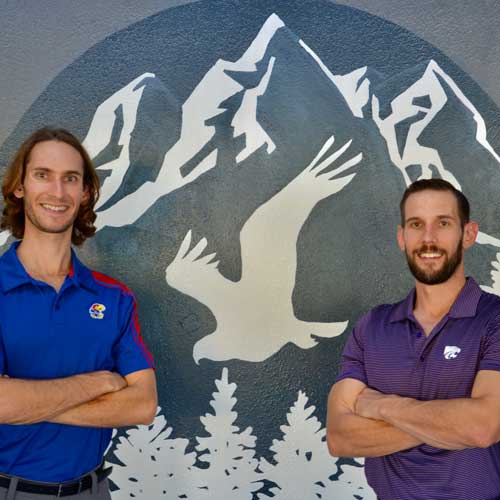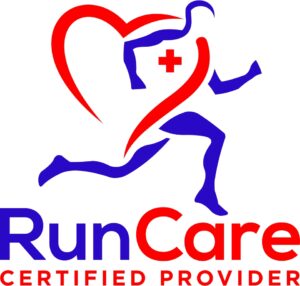
Introduction
Welcome to our detailed guide on managing ankle sprains, a common injury that can disrupt daily activities and hinder physical performance. Whether you’re an athlete or someone leading an active lifestyle, ankle sprains can pose challenges. In this blog post, we’ll explore the causes of ankle sprains, delve into effective recovery strategies, and discuss preventive measures to keep your ankles strong and injury-free. At WildHawk Physical Therapy, we’re committed to helping you navigate the path to ankle health and mobility.
Understanding the Causes of Ankle Sprains
Ankle sprains occur when the ligaments that support the ankle stretch beyond their limits, often resulting from a sudden twist or turn. Common causes include:
- Inversion Injury:
- This happens when the ankle rolls inward, stretching the ligaments on the outside of the ankle.
- Eversion Injury:
- In contrast, an eversion injury occurs when the ankle rolls outward, affecting the ligaments on the inner side of the ankle.
- High-Impact Activities:
- Participating in sports or physical activities that involve jumping, running, or sudden changes in direction can increase the risk of ankle sprains.
- Uneven Surfaces:
- Walking or running on uneven surfaces can lead to missteps, contributing to ankle injuries.
The Role of Physical Therapy in Ankle Sprain Recovery
Physical therapy plays a pivotal role in the rehabilitation process after an ankle sprain. Here’s how it can aid in your recovery:
- Evaluation and Diagnosis:
- A thorough assessment by a physical therapist helps identify the severity of the ankle sprain and any associated issues. This evaluation guides the development of a personalized treatment plan.
- R.I.C.E. Protocol:
- Rest, Ice, Compression, and Elevation (R.I.C.E.) are initial strategies employed to manage pain and swelling. Your physical therapist will guide you on proper application and duration for each component.
- Progressive Exercises:
- As the ankle heals, targeted exercises are introduced to improve strength, flexibility, and range of motion. These exercises may include toe-tapping, ankle circles, and resistance training.
- Balance and Proprioception Training:
- Restoring balance and proprioception (awareness of body position) is crucial. Your physical therapist will incorporate exercises on unstable surfaces to enhance ankle stability.
- Gait Analysis:
- Analyzing your walking pattern helps identify any abnormalities or compensations. Corrections and gait training are essential components of ankle sprain rehabilitation.
- Functional Training:
- Tailored exercises mimic everyday activities and specific movements relevant to your lifestyle or sport. This helps ensure a seamless transition back to normal activities.

Preventing Future Ankle Sprains
Beyond recovery, preventing future ankle sprains is vital. Consider these proactive measures:
- Ankle-Strengthening Exercises:
- Dedicate time to targeted exercises that strengthen the muscles surrounding the ankle joint. Calf raises, performed both on a flat surface and on an incline, effectively engage the muscles and improve overall ankle stability.
- Proprioception Activities:
- Proprioception, or the body’s sense of its position in space, is crucial for preventing ankle sprains. Simple activities like standing on one leg or using a balance board challenge your proprioceptive abilities, enhancing your body’s natural protective mechanisms.
- Proper Footwear:
- Invest in quality footwear that provides adequate support to your ankles. For activities with lateral movement or impact, choose shoes designed specifically for that purpose. Consult with footwear experts or podiatrists to find the best options for your needs.
- Warm-Up and Stretching:
- A proper warm-up is essential before engaging in any physical activity. Focus on dynamic stretches that target the ankles, calves, and lower legs. This prepares your muscles and ligaments for the demands of your chosen activity, reducing the risk of injury.
- Avoid Overexertion:
- Know your physical limits and avoid pushing yourself too hard, especially if you’re returning to intense activities after a period of inactivity. Gradual progression allows your body to adapt and minimizes the risk of overuse injuries, including ankle sprains.
- Taping or Bracing:
- Consider ankle taping or bracing, especially if you have a history of ankle sprains or are engaging in activities with a higher risk of injury. Consult with a healthcare professional or physical therapist to ensure proper application and to determine if this additional support is suitable for your situation.
- Regular Checkups:
- Schedule regular checkups with a physical therapist or healthcare provider, even if you’re not currently experiencing ankle issues. These checkups can help identify any potential weaknesses or imbalances that could lead to future problems. Early intervention is key to preventing injuries.
Returning to Activities After an Ankle Sprain
Successfully recovering from an ankle sprain doesn’t mean you have to avoid activities you enjoy. It’s crucial to take a gradual approach to reintroduce yourself to physical activities. Your physical therapist can guide you through a structured return-to-play plan, ensuring that your ankles are adequately prepared for the demands of your chosen activities.
Conclusion: Your Journey to Strong, Healthy Ankles
In conclusion, conquering ankle sprains involves a multifaceted approach encompassing recovery, rehabilitation, and prevention. WildHawk Physical Therapy is your partner in this journey, providing expert guidance, personalized treatment plans, and ongoing support to keep your ankles strong and resilient.
Your journey to strong, healthy ankles is a dynamic process that extends beyond recovery. It’s a commitment to ongoing care and proactive measures that empower you to embrace an active lifestyle with confidence. At WildHawk Physical Therapy, we understand that ankle health is pivotal to your overall well-being.
Our expert team is dedicated to not just treating ankle sprains but fostering a culture of ankle wellness. We provide comprehensive support, ensuring that you not only recover from injuries but also thrive in your daily activities. With personalized plans and state-of-the-art therapies, we’re here to elevate your ankle health journey to new heights.
FAQ Section: Addressing Your Ankle Health Queries
Frequently Asked Questions:
- Can I still exercise with a history of ankle sprains?
- Yes, with proper guidance and preventive measures, you can continue exercising. A physical therapist can help you develop a tailored plan to minimize the risk of future sprains.
- How long does it take to recover from an ankle sprain?
- Recovery time varies based on the severity of the sprain and individual factors. Mild sprains may heal in a few weeks, while more severe sprains could take several months. Your physical therapist will provide a personalized timeline based on your specific situation.
- Are ankle sprains more common in certain sports?
- Yes, sports that involve quick direction changes, jumping, or uneven surfaces, such as basketball or soccer, may have a higher incidence of ankle sprains. Proper preventive measures, including strengthening exercises and proprioception training, can reduce the risk in these sports.
- Is it normal to experience occasional discomfort even after recovery?
- It’s not uncommon to feel occasional discomfort, especially during weather changes or increased physical activity. If persistent or severe, consult with your physical therapist for further evaluation.
- Can ankle sprains lead to long-term issues?
- While proper treatment and preventive measures significantly reduce the risk, some individuals may experience lingering issues. Regular checkups with your physical therapist can help address any emerging concerns and ensure sustained ankle health.
- What role does footwear play in preventing ankle injuries?
- Proper footwear provides essential support and stability to prevent ankle injuries. Your physical therapist can offer guidance on selecting the right shoes for your activities and foot structure.
- Are there specific exercises to improve ankle mobility?
- Yes, targeted exercises like ankle circles, alphabet drills, and towel scrunches can enhance ankle mobility. Consult with your physical therapist to incorporate these exercises into your routine safely.
By addressing your concerns and providing valuable insights, we aim to empower you with the knowledge needed to proactively care for your ankles.
If you’ve experienced an ankle sprain or want to proactively address your ankle health, reach out to our team at WildHawk Physical Therapy located in Asheville, NC. We’re dedicated to helping you achieve optimal ankle function, allowing you to pursue your active lifestyle with confidence.









